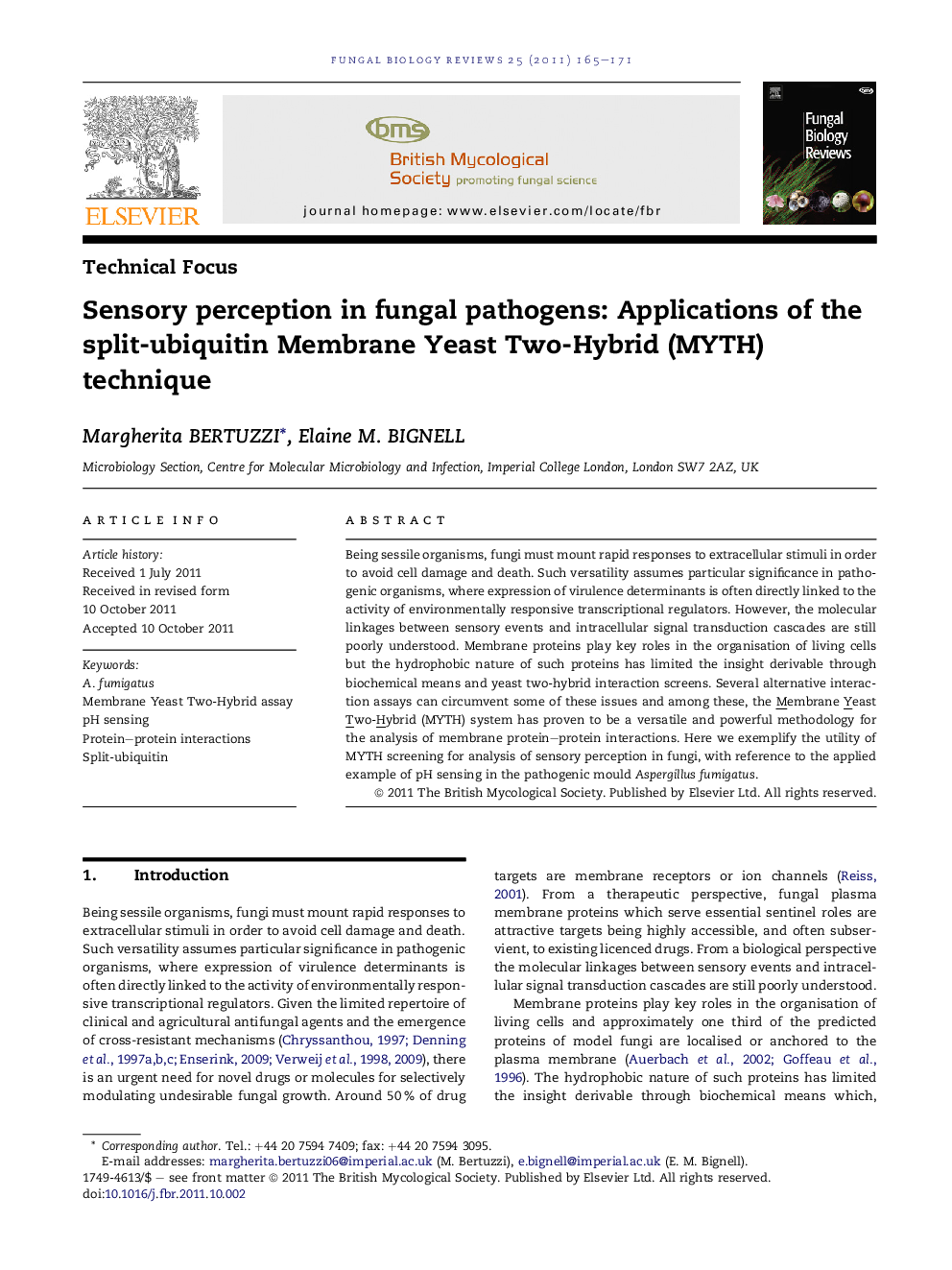| Article ID | Journal | Published Year | Pages | File Type |
|---|---|---|---|---|
| 2180552 | Fungal Biology Reviews | 2011 | 7 Pages |
Being sessile organisms, fungi must mount rapid responses to extracellular stimuli in order to avoid cell damage and death. Such versatility assumes particular significance in pathogenic organisms, where expression of virulence determinants is often directly linked to the activity of environmentally responsive transcriptional regulators. However, the molecular linkages between sensory events and intracellular signal transduction cascades are still poorly understood. Membrane proteins play key roles in the organisation of living cells but the hydrophobic nature of such proteins has limited the insight derivable through biochemical means and yeast two-hybrid interaction screens. Several alternative interaction assays can circumvent some of these issues and among these, the Membrane Yeast Two-Hybrid (MYTH) system has proven to be a versatile and powerful methodology for the analysis of membrane protein–protein interactions. Here we exemplify the utility of MYTH screening for analysis of sensory perception in fungi, with reference to the applied example of pH sensing in the pathogenic mould Aspergillus fumigatus.
